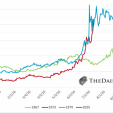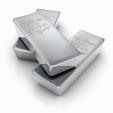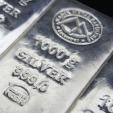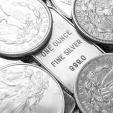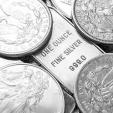Dollar To Weigh on Gold Price, But Not As Much As Expected - Deutsche Bank
New York (April 11) The US dollar continues to be an overhang on the gold market, but analysts at Deutsche Bank suggest the greenback’s effects on the yellow metal may not be as significant as some expect.
“Gold may have less to fear from the big bad U.S. dollar as the Trump administration sees its political capital weaken, and Fed officials begin to take a more realistic view of the delayed impact of fiscal stimulus, and the significance of the package, if and when it finally arrives,” wrote Michael Hsueh and Grant Sporre, research analysts for the bank, in a report Monday.
“Our DB house view on currencies, expressed in terms of the FOMC trade-weighted dollar, indicates that currency risks for gold will remain to the downside for the next year, as the dollar appreciates by 8.66% towards our year end target.”
Gold prices have been volatile this week, rising to a new five-month high Tuesday after falling under pressure the day prior. June Comex gold futures was last up $21.30 at $1,275 an ounce. Meanwhile, the U.S. dollar index last traded at 100.71, down 0.25% on the day.
Based on U.S. dollar and gold correlations dating back to 1993, the analysts noted that gold prices should depreciate by 4.14% with a rise of between 5-10% in the U.S. currency. Likewise, a 10-15% rise in the dollar would translate into a 7.33% depreciation in gold.
In other words, this would translate into year-end gold prices of $1,205 an ounce for 2017 and 2018, and $1,230 for 2019. However, the bank’s annual targets for gold are much higher than that.
“This compares with our annual average targets of USD 1,203/ oz, USD 1,255/oz, and USD 1,288/oz, respectively,” they said.
According to the analysts, gold should benefit as a safe-haven asset, which would limit its downside risk to any rises in the U.S. dollar.
“Across a broad swath of past financial, military and terrorist events, gold tends to lose most of its premium over the following 30 to 50 trading days,” they explained. “A series of consecutive risk events, however, can sustain a given level of risk premium.”
Source: KitcoNews

